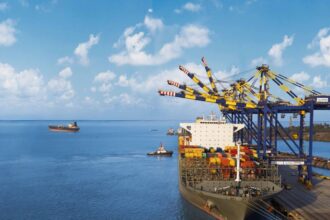In today’s fast-paced global economy, sustainability is no longer an option for supply chains; it’s a necessity. As climate change and resource constraints challenge industries worldwide, supply chain leaders are stepping up to align environmental stewardship with financial performance. This strategic balance is transforming businesses into catalysts for sustainable growth while enhancing their competitive edge.
The Rise of Purpose-Driven Supply Chains
Companies like Unilever and Diageo exemplify the shift towards purpose-driven supply chains. Unilever’s “Sustainable Living Plan” focuses on reducing environmental impacts while growing its business. Similarly, Diageo has set ambitious 2030 goals to minimize carbon footprints, prioritize ethical sourcing, and foster inclusion. These initiatives underline the growing importance of integrating sustainability into the core of supply chain strategies.
Unilever’s approach demonstrates that sustainability is more than a buzzword. By leveraging its Compass Strategy, the company emphasizes sustainable sourcing, workforce diversity, and eco-friendly operations. The result? Over 75% of its financial growth comes from brands with a clearly articulated purpose, proving that profitability and sustainability can coexist.
Embracing Circular Economies
One of the defining trends in modern supply chains is the adoption of circular economy principles. This model focuses on reducing waste and maximizing resource efficiency through recycling and repurposing. Leaders in this domain are finding innovative ways to close the loop, from sustainable packaging solutions to product take-back programs.
Circular economies benefit businesses by reducing material costs, enhancing brand reputation, and meeting growing consumer demand for eco-conscious products. For instance, supply chain executives are increasingly collaborating with partners to integrate sustainable practices into product life cycles, reducing the environmental impact and creating long-term value.
Challenges and Opportunities
While the benefits of sustainable supply chains are clear, the journey is not without challenges. Many organizations face barriers such as high initial costs, resistance to change, and the complexity of aligning ESG (Environmental, Social, and Governance) goals across the supply chain network. However, overcoming these hurdles can lead to substantial rewards, including operational efficiency, regulatory compliance, and customer loyalty.
The key lies in innovation and collaboration. Companies like those involved in Gartner’s Leaders in Action (LIA) programs emphasize the importance of cross-industry partnerships. By pooling resources and expertise, businesses can develop scalable solutions that balance cost competitiveness with sustainability.
Measuring Success
Metrics are vital for monitoring progress and maintaining accountability. Gartner highlights the need for supply chain leaders to adopt clear KPIs for sustainability, such as carbon emissions, water usage, and waste reduction. Regular tracking of these metrics ensures alignment with ESG goals and provides transparency to stakeholders.
Furthermore, integrating sustainability into brand messaging strengthens consumer trust. Research shows that customers increasingly prefer brands with strong commitments to sustainability, creating a powerful incentive for businesses to stay the course.
The Path Forward
As the world grapples with environmental and social challenges, supply chain leaders hold the key to driving transformative change. By prioritizing sustainability, these leaders are not just mitigating risks but also unlocking new opportunities for growth and innovation.
The integration of sustainability and profitability is reshaping the future of supply chains. From ethical sourcing to circular economies, today’s leaders are proving that businesses can thrive while making a positive impact on the planet. With continued focus and collaboration, the supply chains of tomorrow will be both resilient and regenerative.
Conclusion:
Supply chain leaders are at the forefront of creating a sustainable future. By embracing innovative practices and maintaining a dual focus on profitability and environmental stewardship, they are redefining industry norms and paving the way for a more sustainable global economy.







